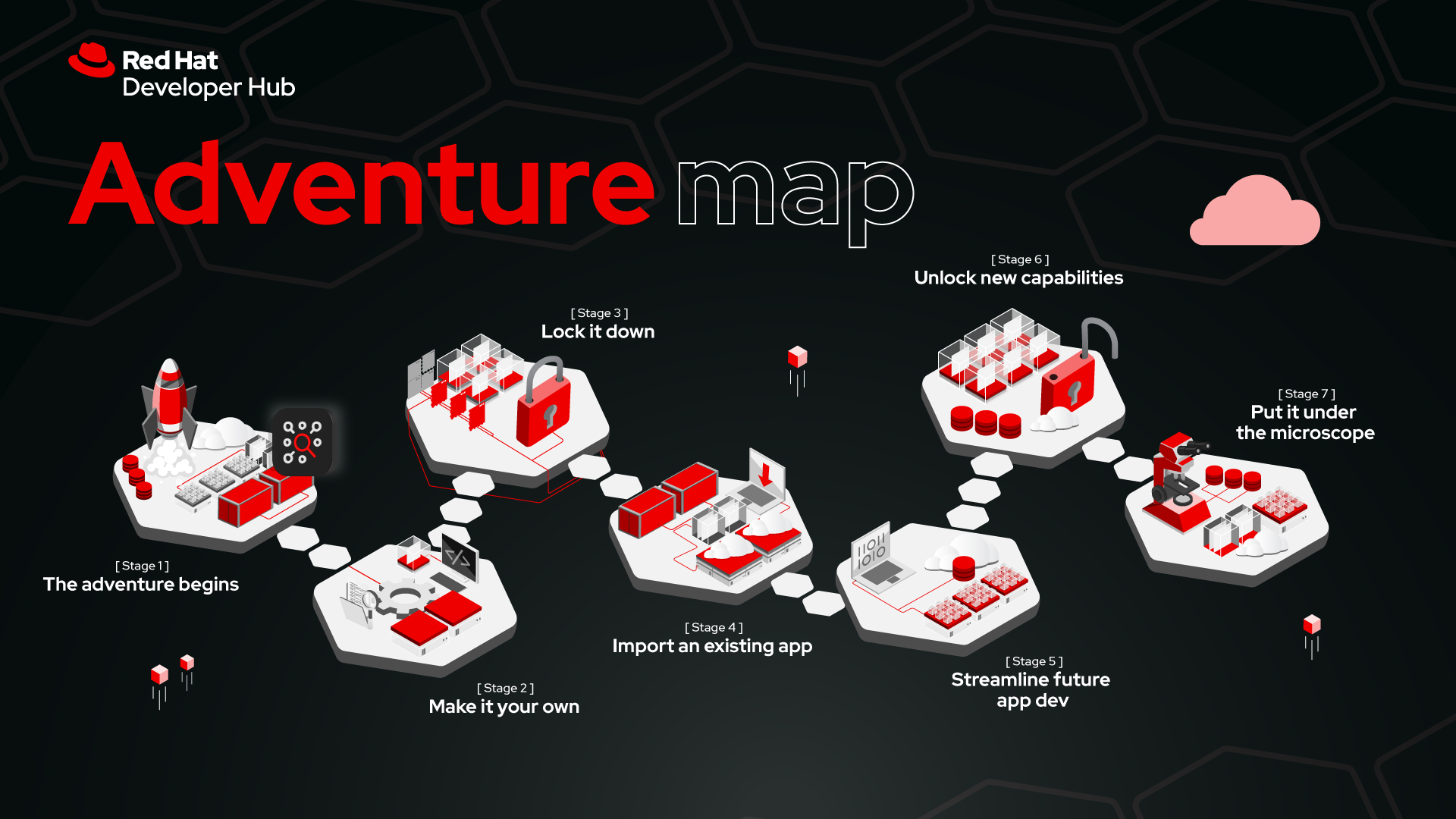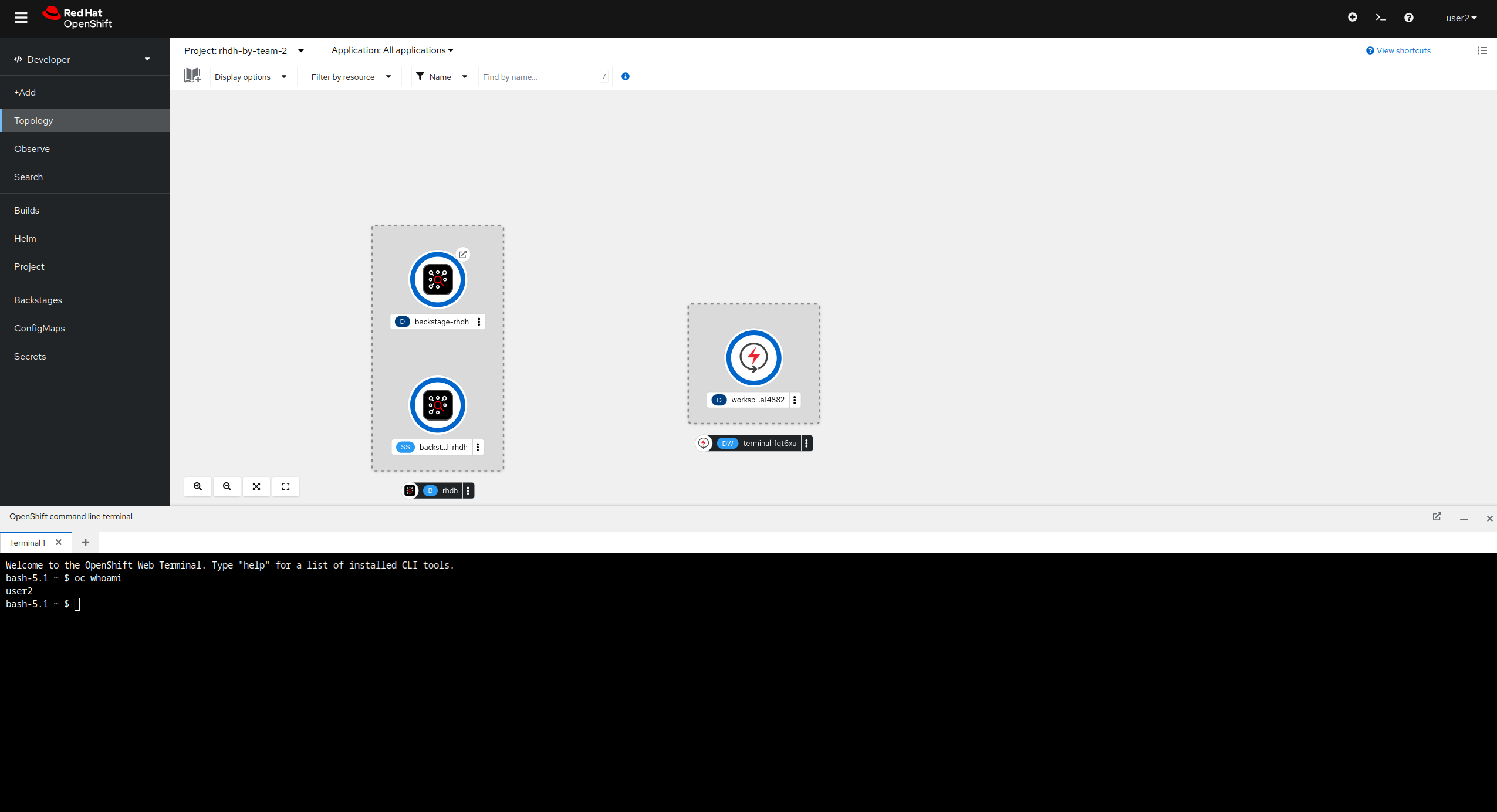Welcome to Red Hat Developer Hub Adventure
A DevEx adventure from Zero to Hero
Your team, as platform engineers, is looking to improve the daily basis of many different development teams and create the best developer experience (DevEx) for them. Red Hat Developer Hub is key in that journey providing different features and integration capabilities with multiple tools. However, your team is facing different challenges which should be resolved before providing the Nirvana for Developers.
Which challenge do you want to resolve? Here starts your adventure with Red Hat Developer Hub to become a hero, and improve the developer experience.
The Stages of your Quest
Your journey to transform the Developer Experience (DevEx) begins with a series of epic stages—each designed to guide you through Red Hat Developer Hub’s incredible capabilities while solving key challenges developers and platform engineers face daily. The adventure progresses step-by-step, starting with the basics and evolving into mastery. The first two stages are essential to lay the foundation of your journey, but after that, the path is yours to choose. Every stage is an opportunity to learn, experiment, and conquer!

Start your journey by deploying Red Hat Developer Hub. Learn how to install and set it up effortlessly using tools like Helm Charts or Operators. This stage is all about getting Red Hat Developer Hub up and running on your platform and preparing the foundation for all the enhancements to come.
Customization is the key to success. Extend the deployment by using externalized configuration objects like ConfigMaps and Secrets. By doing this, you’ll make Red Hat Developer Hub more maintainable, flexible, and ready to adapt to the needs of your developers and platform engineers.
Security is a must in any adventure. Enable authentication and authorization capabilities to safeguard your Red Hat Developer Hub instance. By integrating with external identity providers like GitHub or GitLab, and setting user access policies, you’ll ensure your platform is secure for all users.
A strong catalog is the backbone of Red Hat Developer Hub. This stage focuses on adding components to the catalog, bringing visibility to existing applications and fostering collaboration between developers. Share the resources that matter most and make your platform a one-stop shop for developers.
Speed up development by creating and managing software templates. This stage teaches you how to enable developers to quickly onboard new applications and standardize the development process. Help developers build faster and smarter with guided workflows.
Take your platform to the next level by integrating plugins. Learn how to extend Red Hat Developer Hub using its dynamic plugin framework and discover how plugins can enrich your platform with new features, integrations, and tools that developers can utilize immediately.
What gets measured gets improved! Enable metrics and monitoring capabilities to track Red Hat Developer Hub’s success and improve operational efficiency. Leverage tools integrated with OpenShift to gain insights into usage, performance, and the impact of your platform improvements.
Ready to Begin?
Your team holds the potential to shape the future of development in your organization. As you move through each stage, you’ll sharpen your skills, foster collaboration, and create an environment where developers thrive.
The journey won’t always be easy, but the rewards will be worth it. So, gather your team, ready your tools, and step into this adventure with Red Hat Developer Hub. From zero to hero, the Developer Experience transformation starts here. The only question is: which challenge will you tackle first?
Let the adventure begin! 🚀
Get tutorial sources
The OpenShift cluster includes a web terminal UI with a set of tools installed, such as: oc, or git commands.
The web terminal is available from the button located in the top navigation bar of the OpenShift Web Console:

Clicking it the web terminal is launched and allowing you interact with OpenShift directly. The OpenShift Web Console looks like this:

Before we start setting up the environment, let’s clone the tutorial sources and set the TUTORIAL_HOME environment variable to point to the root directory of the tutorial:
git clone https://github.com/rhdh-adventure-organization/rhdh-adventure.git rhdh-adventureexport TUTORIAL_HOME="$(pwd)/rhdh-adventure"cd $TUTORIAL_HOMEIs OpenShift Ready?
If you are setting up this adventure, please, follow these instructions.